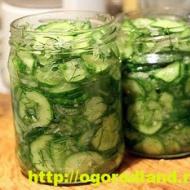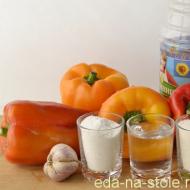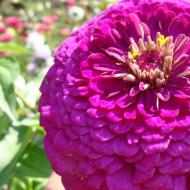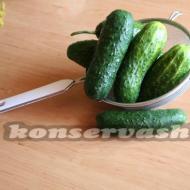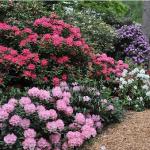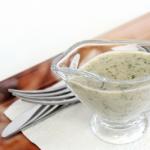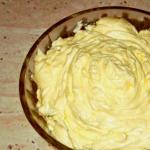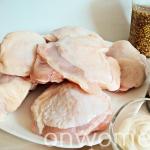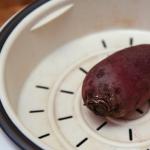
Ginkgo biloba plant. Gingko biloba nuts: beneficial properties, chemical composition and caloric content
At home it will not be difficult, as it is considered to be quite unpretentious in the care. The value of this tree lies not only in its decorative qualities, but also in its healing properties and the ability to use ginkgo in medical practice.
What a tree looks like: its properties
This gymnosperous dioecious plant is rightly considered ancient, since it appeared 200 million years ago. Translated from the Japanese, the name of this plant means "silver apricot". The tree reaches about 40 meters in height, has a light trunk and the original crown (due to gray foliage). In the wild, it is most common in eastern China.
The leaves of the "silver apricot" have a fan-shaped form with two deep lobes. The leaf color is bluish-green, they are mounted on long petioles. In the fall, the leaves become a beautiful golden yellow shade.
A female plant gives flowers with greenish-yellow buds, and the flowering and the emergence of seeds begins in May or June only by 25-30 years. Because of its unpretentiousness, ginkgo biloba is often used for landscaping land, parks or gardens. Usually, male trees are taken for this purpose, because female specimens shed their fruits, which produce an extremely unpleasant aroma during decay.
The tree contains more than 40 useful biologically active substances:
- Amino acids;
- Trace elements;
- Vitamins;
- Essential oils;
- Organic acids.
Ginkgo biloba has the following effects:
- Anti-inflammatory;
- Antioxidant;
- Diuretic;
- Antiedematous.
Therefore, it is often used in traditional medicine or added to dietary supplements, as well as in many drugs.
There are several dozen forms of this tree. In order to grow a plant on your own at home, you need to know what kind of soil and temperature Ginkgo Biloba likes, and how to take care of this tree correctly.
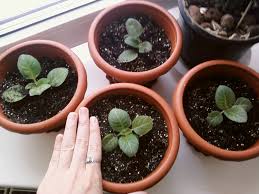
Silvery apricot seeds are propagated by seed, root cuttings or stem cuttings. Cutting cuttings is recommended in late June from short and young shoots that have not yet had time to woody.
Young shoots must be cleaned half of the leaves and then processed by root formation stimulants. It can be root, heteroauxin or any other means.
Rooting cuttings carried out in a greenhouse with a soil of a mixture of peat and coarse sand. From above, the greenhouse is covered with foil, and in the fall, cuttings will be able to take root. During the whole time they must be regularly sprayed with water to preserve moisture. Growing a tree from cuttings will last a little slower than from seed.
Ginkgo biloba can be grown from seeds or from small green cuttings. The seeds of the tree look like little nuts with a thin white shell. They are able to maintain their germination for up to one year, provided that they do not dry out all this time. It is advisable to take seeds with only the best characteristics, which grew in the northern harsh terrain.
Seeds are planted in spring in early March or April in a special box with prepared wet sand. This process is called stratification. Before planting seeds, within one week they must be periodically washed under running water. Seeds are sown to a depth of about 7 cm, after which the box should be covered with a protective film to maintain temperature and humidity, then it should be put in a dark place.
In the presence of fruits that gives this plant, you can plant fresh seeds, pre-clearing them from the pericarp. A month later, the first shoots will appear, and when the shoots reach a height of 7 cm, they must be transplanted to a permanent place.
After spring frosts, seedlings can safely plant a plant on open ground. If you put it in a place where direct sunlight falls, the leaves can burn out, so it is recommended to create a light shading. To transplant is necessary not earlier than the tree reaches the age of three. The distance between the plants should be approximately 15 or 18 cm.
Ginkgo biloba soil is not demanding, it grows well in any nutrient soil. Therefore, suitable garden soil or you can take a mixture of peat, leaf humus, sand and moss.

- It is easy to germinate plant seedlings and take care of them, it is enough to periodically weed the soil from weeds and make regular watering. In summer, the tree especially needs additional moisture, and therefore watering will have to be done more often.
- The young plant does not need additional feeding, therefore it is recommended to do additional fertilizing with special fertilizers some time after its transplantation. It is enough to apply fertilizer to the soil once a month. This may be garden compost, superphosphate fertilizer, or other means.
- In winter, ginkgo biloba can be dug and folded in a box of sand in a dark place (basement). If you leave the plant in the winter outside, the soil must be mulched. To do this, take coniferous sawdust and fill them with a tree in full growth. It is necessary to remove the layer of mulch only after all the snow cover has come down in the spring. In general, the plant is very difficult to tolerate transplant, so it is not recommended to do it without a serious reason. The following year, to provide special shelter for the winter is not necessary. Rooting occurs within two years and at this time you can not wait for growth.
Pests and diseases
Rodents cause the greatest damage to a tree, namely mice that love to eat its bark. In this case, a special tool that is sold in flower shops can help.
This tree is not afraid of insect pests and has good frost resistance, as well as a strong gas pollution of the air or smoke can not harm it. But on the other hand, a cold and damp summer can damage a plant, when shoots do not have the opportunity to mature.
Growing up in an apartment

Growing ginkgo in the apartment also does not present any particular difficulties even for novice gardeners. It is recommended to put a plant pot on the shaded side, protected from drafts and direct sunlight. If you put a tree on the south side, it will grow badly, and the leaves can get burned. In winter, it is necessary to properly maintain the tree and provide him with extra care.
The air temperature in winter should be within 18 degrees. At non-observance of a temperature mode during this period its life cycle gets off, and the tree can die. Watering the plants should be limited during this period several times, but the soil should not be too dry.
Silver apricot propagates in apartment conditions also with seeds and cuttings. The cuttings of the main shoot often give straight and beautiful trees, and the cuttings of the side shoots are distinguished by their slowness and short stature.
After germination, seedlings are planted in permanent pots or tubs and put up on the veranda, on the balcony or in the garden. For soil, the plant is suitable solid substrate of humus and vermiculite, taken in equal quantities. In one season, the tree grows about 15 cm.
In summer, ginkgo biloba needs more frequent watering and fertilizing with fertilizers for indoor plants. The air temperature in the summer should be kept within 22 degrees. Formative pruning is recommended during active growing season.

It is considered a unique tree that has no close relatives. It is a living mineral, has long been cultivated and used both as medicines and as food. Gingko nuts are large trees that reach about 30 m in height. The plant has strong roots and tolerates adverse weather conditions. Ginkgo biloba grows best on “semi-wild” soils and does not tolerate shade.
Stem
Gingko bilobed - deciduous tree with a crown, which is constantly growing. Short shoots are formed from the leaf axils in the second year of growth. The internodes are very short and appear regularly on the branches. Leaves at the ends are collected in short shoots, reproductive structures are formed on them.
Leaves
The gingko tree has unique leaves. They are fan-shaped, and the veins never anastomose into a network shape. Two veins branch out several times. The length of the leaves is approximately 10 cm.
Breeding
Ginkgo is a plant that is divided into male trees and female. The first produce pollen cones with sporophylls. They have two microsporangia, which are arranged in a spiral. Female trees do not produce cones, eggs are formed at the end of the stem, and after pollination they are transformed into seeds up to 2 cm in length. 
Where does ginkgo biloba grow?
For years, the nut was considered extinct in the wild, but it became known that it grows in eastern China. The tree can be found in deciduous forests or in places where there is silty soil with good drainage and pH ranging from 5.0 to 5.5.
What is the use of plants?
For medicinal purposes, the leaves are used which must be collected during the growing season. They contain phenylpropane derivatives and linalool esters. A unique ginkgolide has been found in the roots.
The plant has specific substances that dilate the blood vessels and increase the elasticity of their walls. In addition, Ginkgo effectively fights inflammatory processes. Preparations based on this plant are indicated for arrhythmia, heart attack, atherosclerosis, and asthma.
Gingko nuts and their leaves contain flavin glycosides, which have a strong antioxidant property. Due to the therapeutic effect that the plant has on the human body, it helps reduce cholesterol, reduce edema, and normalize metabolic processes.
Preparations for the preparation of which use gingko biloba, normalize blood pressure and have a positive effect on thinking and memory, accelerate brain processes and supply tissues with oxygen.
Regular intake for a long time helps to improve vision and hearing, helps eliminate headaches and dizziness.
The drug is often prescribed for dangerous diseases that are accompanied by impaired blood circulation, for example, diabetes. 
Leaves Tinctures
They are a drug that has many beneficial properties. The spectrum of its action is quite wide, therefore it has a positive effect on the functioning of the whole organism.
Doctors are confident that the regular intake of medicines, which include gingko nuts or leaves of this plant, prevents the development of heart attacks and strokes. Positive dynamics, as a rule, is noted already a week after the first use.
Preparation of tincture
To prepare the drug at home, it is necessary to pour walnut leaves with 40% alcohol in a ratio of 1:10. After that, you need to let them stand for two weeks in a dark place, and then strain. Take should 10 drops, which are diluted in 100 grams of water. You need to be treated for at least a month for a positive result. In a year you need to drink three such courses. This scheme allows you to get a stable improvement. If you regularly take gingko, the mind will be sharp.
Tincture is used as an external tool, for example, for the rejuvenation of the face and body.
Ginkgo biloba seeds
The length of the seeds rarely exceeds 3 centimeters, they have a fleshy shell. With their help, you can multiply the plant. To do this, before planting, it is necessary to remove the fleshy pericarp and sow to a depth of about 5 centimeters. For germination they need about a month. Gingko nuts are considered a fast-growing plant, so for the first year the seedlings grow 15 centimeters higher. They quickly form shoots and active shoots from stump to root.
Seedlings react very negatively to transplantation, so some time after it may not grow. 
Ginkgo Teas
On the basis of this plant you get a wonderful tea, which is widely known for its medicinal value. If you combine the roots and leaves, the effect is multiplied. After regular intake of the drink during the month, the immunity will increase significantly, the memory will become better, mental reactions will increase, and overall health will also improve.
Tea restores blood circulation, provides a sufficient flow to the brain, protects cells from free radicals and improves the functioning of all organs. Regular intake of this drink slows down the aging of the body and the activation of platelets.
To replenish the reserve of strength and vigor, you need to replace this tea.
Ginkgo oil
It is considered a terrific regenerating agent that, when applied externally, strengthens the hair and makes the hair smooth and shiny. Oil is also used in the care of the face. It perfectly treats eczema, sores, wounds and other skin diseases. 
Chemical composition and caloric content
The plant is considered incredibly useful, as it includes the following components:
- bioflavonoids;
- ginkgolides A, B, C, J;
- bilobalide;
- proanthocyanidins;
- alkylphenols;
- simple phenolic acids;
- 6-hydroxy-kinureic acid;
- 4-O-methylpyridoxine;
- polyprenols.
Unlike other fruits of these small, 0.1 kcal, so their use does not affect the harmony of the figure.
How to eat nuts?
Ginkgo biloba nuts have a weird taste, so eating them in handfuls is unlikely to work. In addition, they have a peculiar aroma and heavy aftertaste. But they can be used as an ingredient in cooking. They are used as a spice and give dishes a savory taste. 
Contraindications
The use of this plant is indisputable, but still uncontrolled intake of drugs based on it can be dangerous. It is not recommended to use it in the event that hypersensitivity is observed on its components. Also, do not use the drug during pregnancy and lactation.
Some people have side effects such as headache, dizziness, and allergic reactions.
Garden plants of this species can be grown in the home, which is absolutely no difficulty. It can be called unpretentious, but its main value is far from decorative qualities, but in the ability to use ginkgo biloba for medical purposes.
This plant can be called one of the most ancient, therefore the garden in which it grows will always attract the enthusiastic views of its neighbors. Translated from the Japanese language means silver apricot. Able to reach an unprecedented height of 45 meters, while having the original bark and light trunk.
Ginkgo biloba tree. Where grows and how to grow it
The most widespread in eastern China. The leaves of this plant have a fan-shaped form and several deep lobes on their surface. The foliage may be green or gray in color and is attached to the elongated petioles. In late autumn, she changes color to golden yellow.
In female plants, the inflorescences have a yellowish-green color, and the seeds appear only by mid-June, by the age of 30, the life of the ginkgo biloba. Not rarely used for landscaping gardens, park areas and suburban areas. But for this purpose it is customary to use male trees, since female trees shed fruits that, once on the ground, begin to emit a very unpleasant odor.
Useful substances that are part of the plant:
- essential oils;
- amino acids;
- organic acids;
- vitamins;
- trace elements.
Able to have such an impact:
- Antiedematous.
- Anti-inflammatory.
- Diuretic.
- Antioxidant.
Its components are often included in the composition of active additives and are used in traditional medicine. Medicinal preparations are made from it, which are in great demand among the population. There are dozens of gingka varieties. For proper care and cultivation, it is necessary to know the temperature and the type of soil that will allow you to achieve the best result. How the ginkgo biloba tree looks like, the photo can be viewed below.

Planting and aftercare
Choosing the final place for planting a tree is worth considering the fact that over time it will need a lot of space. At the same time, the plot should be as lit as possible, since the plant is extremely light-requiring. Having chosen the first place for planting, it is necessary to understand that it must remain constant, since gingko biloba tolerates any transplants extremely poorly.
The first few years there will be practically no increase, because at this time all the forces of the plant will go towards the development of a powerful root system. Pre-prepared wells must be filled with the most fertile soil. Particular attention during planting should be given to the roots, which should not be tangled and freely lie on the bottom of the fossa. Periodically requires watering, since we can not allow the roots to be in dry ground. If the selected location of groundwater is observed at a selected location, then it is better to give preference to another site.

The main task in the first years of the tree’s life is the timely loosening of the soil, regular irrigation and the timely removal of weeds that have appeared. At the same time, a tree can easily be called unpretentious, as it will eventually come to terms with new conditions for it. The first feeding is carried out directly during planting.
For this, a mixture based on mineral fertilizers and ash is poured at the bottom of the well. In the summer, you can use complex feeding, but they are made directly under the root and in liquid form. You can add fertilizer in the form of foliar feeding, while the composition starts up on the leaves. The tree is extremely vulnerable to many diseases. In winter, hares and field mice can live in the root system.
Breeding
Reproduction is acceptable, both with the help of stems and seeds. But it is recommended to use the root grafting method, as more efficient and reliable. For the manufacture of cuttings, Ginkgo biloba stems are cut in early July. In this case, it is necessary to use not long shoots, but short and even less lignified ones. Certain shoots are cut, it is better to leave at least part of last year's wood on the cuttings. Half of the leaves are immediately removed from the cuttings, after which they are placed in a solution based on a rooting stimulator. Heteroauxin may be used.

Then you can plant cuttings in a soil greenhouse. At the same time, it is recommended to use a mixture based on peat and sand as a substrate. Young shoots are regularly sprayed. With all the requirements, by the fall the first roots should appear or callus should be formed.
Before the onset of winter, the plant is filled with sawdust. The cuttings will develop much slower than seedlings, but this is characteristic only in the first few years of their life. Most gardeners are keen on this plant because of the originality of its foliage, which has healing properties, and because of its decorative appearance.
You might also like:
 How to grow eucalyptus from seeds in the garden - planting and care
How to grow eucalyptus from seeds in the garden - planting and care
 How to grow a pear in the country - planting and care?
How to grow a pear in the country - planting and care?
 How to feed gooseberries in the spring and after harvest
How to feed gooseberries in the spring and after harvest
 Repair raspberry - growing, care, pruning
Repair raspberry - growing, care, pruning
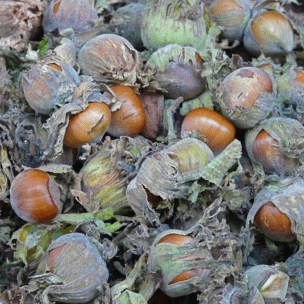 All about the beautiful common hazel bush: care, breeding, planting and disease
All about the beautiful common hazel bush: care, breeding, planting and disease
 The best wine grape varieties for central Russia.
The best wine grape varieties for central Russia.
In this photo (copy) you see the verse lines of a small work by the great Goethe called Ginko biloba, dedicated to his beloved, which in addition are decorated with leaves of this amazing tree.
ginkgo biloba photo verse goethe
The poem Johann Wolfgang von Goethe dedicated his mistress Marianne von Willemer ...
Leaf from the tree, that from the east
In a quiet garden got mine
Meaning of secret source
It seems at times.
Is it living in two parts?
Is the creature split?
Or we are two
Unity nature?
And, questions this heed,
The essence will comprehend their depths:
In the songs you feel when I
And forked, and one?
Translation by Vladimir Rudin
At that time, the famous poet was an adviser at the court in the city of Weimar and was fond of the natural sciences, in particular biology. In addition, he was known as a "prankster" who loved women. Marianne was a former dancer and the wife of his friend, moreover a few years younger than a poet ...

So what is this tree, the leaves of which the poet himself attached to the letter as a symbol of love and friendship?

China is the birthplace of the ginkgo biloba tree. Today it is found almost everywhere, because of its usefulness and unpretentiousness. This is the only representative of this culture, it is often called “living fossil”. At home in East Asia, ginkgo biloba is a cult and sacred tree. Sailors brought it to Europe, and in about 1730 it received almost a second birth as an ornamental plant.
Ginko biloba belongs to the deciduous group, and in the fall after a beautiful flowering drops its leaves. A tree that reaches thousands of years old can reach a forty-meter height and four meters in girth.

The Goethe tree has interesting leaves in the form of a fan with a toothed frame. Moreover, each tree is unique in the shape of its leaves. Every tree is different. The ginkgo biloba tree blooms in late April - early May. The Goethe tree is dioecious, but at the stage of its maturity it enters at the age of twenty or thirty. The tree can be masculine or feminine, with male and female germ cells. Translated from the Chinese ginkgo biloba means "silver apricot." Indeed, the fruit of the tree often resembles yellow apricots, but with a rather unusual smell and aroma. Inside the fruit is a seed in the form of a disk, which is edible, and the fleshy shell gives an unpleasant smell to the fruit.

At present, ginkgo biloba seedlings can be purchased in central Russia already acclimatized. They learned to grow it like a bonsai tree.

Ginkgo biloba tree, resistant to various types of pests and even frosty winters and winds. Practically does not require additional care, is not demanding on the soil, plant a tree better on the sunny side.

Ginkgo has gained wide popularity in European countries thanks to its wide range of healing properties that have long been used in the East. In Japan and China, the seeds of the fruit of the tree were used as food, for example, as an additive to rice or as a snack. For this, the seeds were cleaned and then boiled or fried. Asian spice is also prepared from seeds.
Seeds contain 37.8% carbohydrate , 4,3% squirrel and 1.7% fat Excess ginkgo seeds can cause symptoms of poisoning.
In Asia, ginkgo biloba is a sacred tree, the personification of life and fertility, as well as a symbol of a strong and friendly marriage. In Japan, ginkgo is under state protection.
In Chinese medicine, leaves, seeds and roots of the plant are used. The leaves of the ginkgo biloba tree are brewed as tea and drunk from heart disease and to improve brain function, for longevity.
Seeds used to treat the bronchi and throat, from prolonged cough, with kidney and bladder disease.
The roots of the tree are used in China for the preparation of drugs for male and female infertility, hormonal disorders and painful periods.
Ginkgo biloba leaves application
Useful properties of ginkgo in the preparation of cosmetics, shampoos, creams, soaps. Ginko Biloba improves the color and condition of the skin, making it velvety, young and elastic.
Ginko biloba has antioxidant, immunomoduliruyuschimi and anti-inflammatory, vasodilator properties.
It contains ginkgolides, they give the plant a vasodilating effect, as well as flavoglycosides, amino acids, vitamins, micro and macronutrients.
In Europe, medicines are made in the form of extracts of ginkgo biloba leaves and used
for disorders of the brain
while attenuating attention
memory impairment
dizziness
tinnitus
headache
for symptomatic treatment of arterial circulatory disorders
to stabilize the central nervous system
and
with sexual disorders
with thrombophlebitis
On the basis of ginkgo biloba, many medical preparations are made in the form of tablets and capsules, as well as biologically active additives. Each of the items has its own characteristics, choosing a drug should consult a doctor.
At home, most often prepared infusion. To do this, take one tablespoon of crushed leaves, pour boiling water and infuse for half an hour. A glass divided into three doses, this is the daily dose. Take half an hour before meals.

But the use of ginkgo biloba has its own contraindications and unwanted side effects.
Side effects include: headache, insomnia, gastrointestinal upset, allergic reactions.
It is contraindicated to use drugs with ginkgo biloba:
pregnant and lactating women
children under 16
patients with blood clotting disorders
period of acute heart attack and stroke
Studies on the properties of ginkgo biloba are continuing, experts argue that in no case should the dosage indicated on the medicine packages be increased. Before starting treatment, you should consult a doctor to select the necessary and safe dose and duration of treatment. Also, drugs on the basis of the Goethe tree can not be used with other drugs that thin the blood.
Botanical characteristic
Ginkgo biloba (Ginkgo biloba), in translation - Ginkgo biloba, is a relict tree up to forty meters high, which is sometimes called a living fossil. The diameter of its trunk sometimes reaches five meters. At the beginning of its formation, the crown of the pyramidal form, but over time it begins to grow.
This is a deciduous tree with an unusual form of leaves in the form of a fan-shaped bilobate plate, the length of which is no more than five, eight centimeters. The leaves are located on a thin petiole, they develop quite quickly.
This plant is dioecious, while pollen develops on male specimens, and ovules each - on female specimens. This process first begins to occur in the 25th year of life of this tree. The seeds resemble apricots, but differ in a rather unpleasant odor that looks like rancid oil.
Such an unpleasant smell is due to the presence of butyric acid, which is present in this plant. The peel of the seed consists of three layers: from the fleshy yellow-amber outer, from the middle - hard, and from the inner, which is quite thin.
This tree has a well-developed root system, it is resistant to snow drifts. At the beginning of autumn the leaves begin to turn yellow quickly, and then they fall. Some representatives of ginkgo reach the age of 2500 years.
Spread
For a long time it was believed that this tree is not found in the wild, but now it is known that this is not so, and it grows in two eastern regions of China. Currently, ginkgo biloba is cultivated in many botanical gardens and park areas in the subtropical territory of North America, as well as in Europe.
Used part
In bilobed ginkgo, leaves are used for medicinal purposes, which contain important medicinal substances.
Chemical composition of this plant
This plant contains the following substances in its composition: flavone glycosides, among which can be mentioned kaempferol, quartzine, gingolide; there are terpenes in it, for example, ginkgolides, bilobalids.
In addition, there are various organic and ginkgoic acids in this medicinal plant; many amino acids are present; and also there are alkaloids, wax, steroids, some essential oils.
Rich in Ginkgo biloba and vitamins. As for mineral substances, among them are the following elements: selenium, magnesium, manganese, copper, phosphorus, titanium, calcium, potassium, iron, as well as a number of other equally important representatives.
The use of ginkgo biloba
For several thousand years, this plant has been used for medicinal purposes, and is considered one of the most popular medicinal representatives of the flora throughout the world. On the basis of a bilobed ginkgo, various healing remedies are prepared. It is especially popular in Chinese medicine.
Its widespread use is justified by the healing composition of ginkgo extract, which contains the maximum number of diverse active ingredients, among which substances such as terpenoids and flavonoids are in the first place.
As a result of scientific research, it was revealed that this plant contains special substances that block the formation of beta-amyloid proteins, thereby reducing the risk of developing Alzheimer's disease.
Means prepared from this plant are used in violation of memory, thanks to their use, mental processes are improved, the quality of life of patients suffering from severe Alzheimer's disease is normalized.
It has been found that flavonoids that are present in ginkgo biloba, have a positive effect on the organ of vision, in particular, improves the function of the retina. Ginkgo biloba extract can be used to treat and prevent retinopathy, it helps prevent age-related degenerative processes occurring in the tissues of the eye.
Flavonoids are natural antioxidants, respectively, they do not allow free radicals to destroy the cells of the body. At present, the properties of this extract have not yet been fully studied, but, nevertheless, the results of the conducted studies indicate only the positive effect of ginkgo on the organ of vision.
The use of an extract of this plant helps to cope with premenstrual syndrome. Due to the fact that the feeling of tension decreases, the irritability decreases, the swelling and tenderness of the mammary glands disappear. Thus, all symptoms that are characteristic of this condition are removed.
In addition, Ginkgo biloba is used in atherosclerosis, as it helps to reduce cholesterol levels, and it is also used for varicose veins. Plant extract has a positive effect on blood circulation, and also strengthens the walls of blood vessels.
The pharmaceutical industry produces ginkgo biloba extract, which is obtained from the dry leaves of this medicinal plant. If we talk about the composition of this tool, then it is standard, regardless of the manufacturer, it contains about twenty-five percent of flavonoids and six percent of terpenoids.
Conclusion
Before you begin to apply the extract from this valuable medicinal plant, it is recommended to consult a qualified doctor. Since there may be contraindications to its use.


